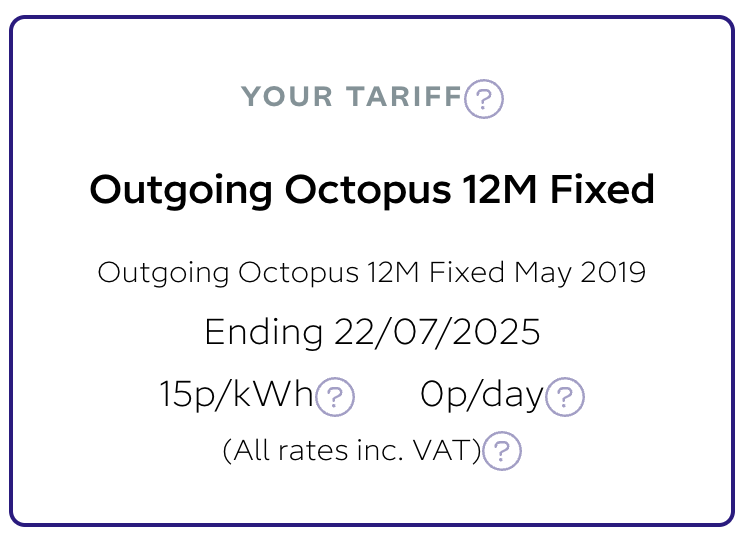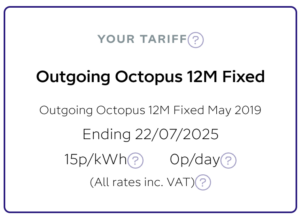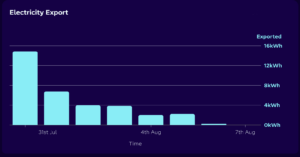Once I brought my East and West arrays online late on the 1st of July, along with the move into better weather with more sunshine, there was a much greater chance that I was going to start exporting a significant amount of energy back to the grid.
With only my Garage and Office arrays in action, combined with less than stellar weather in June, I had only exported 2.2kWh of electricity back to the grid for the whole of the month, at £0.15 per kWh this would amount to £0.33 of savings, so not really worth losing any sleep over.
With the East and West arrays in action, on the 4th of July, I exported a massive 20.4kWh which would equate to £3.06 just for that day, which would have meant that I was actually owed money for that day’s electricity usage, now this is worth doing something about.
Octopus Energy are currently the only energy provider who are willing to accept non MCS accredited installations for their Solar Export Guarantee (SEG) tariff.
This is currently a Beta trial program and each application is assessed individually for inclusion.
There is a £250.00 cost associated with application, however they will return £150.00 of this if your application is unsuccessful.
On 17th July I filled out my application online and provided the required documentation:
- Certificate of approval for export from my DNO (UK Power Networks)
- Part A approval Certificate from my local Building Control Office
- Electrical Installation Certificate for the solar installation
Along with the approved export/generation figures for my installation.
To be honest I was unsure how successful I would be with my application, I had seen a fair amount of discussion on various forums regarding this scheme, but not read about any success stories.
Imagine my surprise when just 5 days later, on 22nd of July, I receive an email from Octopus Energy stating that my new export meter had been setup and that my application had been successful.
It took a further 2-3 days for my meter to update completely and start sending half hourly updates to Octopus, during which time they saved no data on their consumption downloadable CSV files.
On 24th of July they finally had everything sorted and were able to start registering my solar PV exports.
An additional piece of good news was an update of the firmware for my Enphase Gateway and Enphase app that now allows you to discharge the batteries ‘now’ or on a schedule, just like you can with charging.
This means that I can make use of this functionality when the saver sessions come back later this year to dump the contents of my batteries on the grid to earn a significant amount for the export.
There is no benefit in emptying the batteries during the day normally as I would only earn at £0.15 per kWh, having charged them at £0.070 per kWh, then need to import at the peak rate of £0.24393 per kWh for the remainder of the day.
Something else I have been tracking ever since I switched to Octopus Energy is whether or not I would be better off on their Agile tariff as compared to the tariff I was on at the time.
Octopus provide a web page where you can compare your current tariff against Agile to see if you would be better off: https://agile.octopushome.net/compare-your-consumption You enter your address, meter MPAN and serial number and you can then compare between two sets of dates.
When I first joined Octopus Energy, I was put on their standard rate tariff for a while until my meter was checked and they could verify my MyEnergi charger for use with the Intelligent Octopus Go tariff.
| My Tariff | Agile | % | |
| January | 402.29 | 291.71 | 27% |
| February | 409.96 | 245.03 | 40% |
| March | 444.99 | 275.54 | 38% |
| April | 262.07 | 180.37 | 31% |
| May | 178.34 | 217.57 | -22% |
| June | 154.43 | 202.17 | -31% |
| July | 83.04 | 130.32 | -57% |
As you can see in the days before I had any solar PV generation or batteries, I would have been significantly better off on the Agile tariff than the Intelligent Go tariff, however once I started generating solar in May, that started to change and my usage flipped from 75% peak to over 75% off-peak, then after the East and West arrays came live in July I was then occasionally generating enough to also export back to the grid to lower my monthly costs even further.


